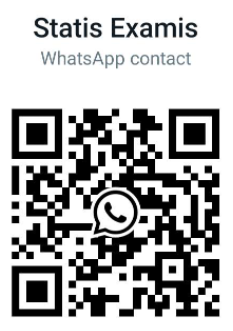Navigation » List of Schools » Glendale Community College » Psychology » Psychology 103 – Physiological Psychology » Spring 2022 » Chapter 6 Practice Quiz 2
Question #1
A retinal damage.
B collicular damage.
C thalamic damage.
D spinal damage.
E primary visual cortex damage.
Question #2
A V3.
B posterior parietal cortex.
C MT/V5.
D primary visual cortex.
E the dorsal route.
Question #3
A recognize parts of faces.
B recognize specific names of faces.
C recognize cows and birds.
D distinguish among similar members of complex classes of visual stimuli.
E distinguish among similar individuals.
Question #4
A ventral stream is to dorsal stream.
B visual perception is to spatial perception.
C dorsal stream is to ventral stream.
D agnosia is to blindsight.
E contrast vision is to color vision.
Question #5
A posterior parietal cortex then to inferotemporal cortex.
B inferotemporal cortex then to posterior parietal cortex.
C dorsal prestriate cortex then to inferotemporal cortex.
D dorsal prestriate cortex then to posterior parietal cortex.
E inferotemporal cortex then to prestriate cortex.
Question #6
A hindsight.
B hemianopsia.
C binding.
D completion.
E serial processing.
Question #7
A secondary visual cortex.
B association cortex.
C primary visual cortex.
D primary cortex.
E paleocortex.
Question #8
A secondary visual cortex.
B the occipital lobe.
C the parietal lobe.
D association cortex.
E primary visual cortex.
Question #9
A dual-opponent color cells.
B cones.
C complex cortical color cells.
D simple cortical color cells.
E trichromatic color cells.
Question #10
A lights of the same wavelength appear to be the same color, regardless of their intensity.
B lights of different wavelengths appear to be different colors.
C an object appears to be the same color despite changes in the wavelengths of light that it is reflecting.
D complementary colors always look complementary.
E lights of the same wavelength appear to be the same color.
Question #11
A also known as the component theory.
B supported by complementary afterimages.
C a version of the opponent-process theory.
D supported by monochromatic colors.
E also known as the opponent theory.
Question #12
A edge perception.
B color vision.
C visual illusions.
D wavelength.
E color mixing.
Question #13
A more monocular
B bigger
C smaller
D more circular
E less circular
Question #14
A are unresponsive to diffuse light.
B have rectangular receptive fields.
C respond to contrast.
D respond best to straight-line stimuli in a particular orientation.
E all of these
Question #15
A circles of light.
B monocular stimuli.
C diffuse light.
D circular edges.
E contrast.
Question #16
A straight lines.
B dots of light.
C movement.
D circles.
E contrast.
Question #17
A defining the receptive fields of individual neurons.
B none of these
C starting at the periphery of a system and progressively studying neurons at “higher” and “higher” levels of the system.
D determining which stimuli have the most effect on the firing of an individual neuron when they are presented in its visual field.
E all of these
Question #18
A visual receptors on the more intense side of an edge receive less lateral inhibition than receptors on the less intense side.
B visual receptors on the more intense side of an edge receive more lateral inhibition than receptors on the less intense side.
C visual receptors adjacent to an edge on the more intense side receive less lateral inhibition than do receptors farther from that edge, and because visual receptors adjacent to the edge on the less intense side receive more lateral inhibition than do receptors farther from that edge.
D the visual receptors near an edge become hyperpolarized.
E if A fires less than B, B must fire more than C.




